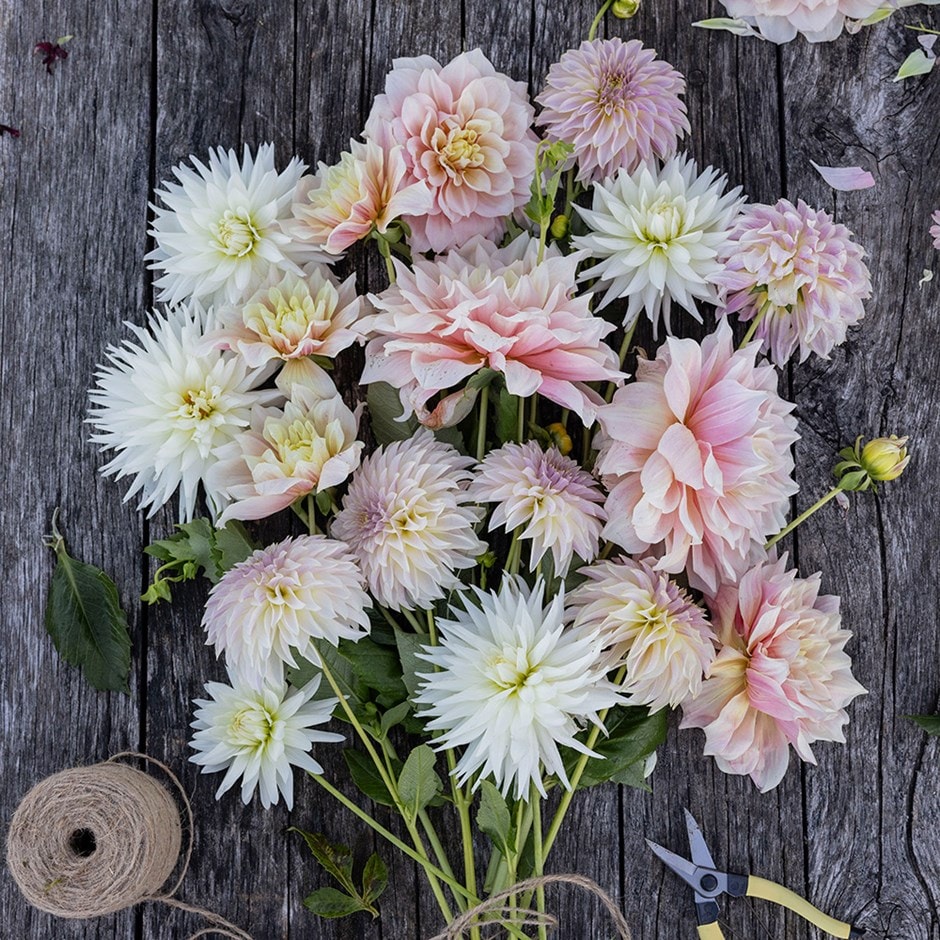Pastel antique dahlia collection
dahlia collection
This bulb dies back after flowering each year and enters a period of rest ahead of regrowth the following season.
- Position: Full sun
- Soil: Moderately fertile, moist but well-drained soil
- Rate of growth: Average
- Flowering period: July to September
- Hardiness: Half hardy (may need winter protection)
A perfectly pastel pink and white collection of contrasting and complementary dahlia colours and forms to adorn borders, bridal bouquets, and cut flower vases.
In each collection you will receive one tuber of each of the following:
Dahlia 'Ka’s Champagne': A vigorous cultivar producing an abundance of medium-size buttercream blooms blushed with pink. Blooms up to 10cm (4in) across on long stems last long in the display vase (though don’t pick dahlias too early as they don’t unfurl for long after cutting). ‘Ka’s Champagne’ bears ‘Stellar’ decorative-shaped flowers meaning the petals are puckered to be similar to miniature calla lilies, with a slight recurve to the stem. Grows to 1m.
Dahlia 'Mount Tacoma': 'Mount Tacoma' stands out as a perfect semi-cactus white variety, boasting prolific blooms that endure exquisitely in a vase, making it a fantastic addition to any bouquet. Adorned with pure white narrow and pointed petals that span about 15cm (6 in) across, this dahlia offers a striking visual impact. Grows to 1.2m.
Dahlia 'Break Out': Similar in style to ‘Café au Lait’, ‘Break Out’ offers a slightly pinker hue and a hint of yellow at its heart, creating a captivating spectacle that's sure to turn heads. The soft unfurling leaves on long stems add an elegant touch to any cut flower arrangement, while the blooms themselves are sure to captivate garden onlookers with their creamy petals tinged with blush pink and buttercream overtones. Grows to 1.2m.
Dahlia tubers can be planted outside after frost, or started off in pots under glass in late winter to early spring. Plant them horizontally approximately 12cm deep, making sure the ‘eyes’ are uppermost. Allow enough room between each tuber so the plants can grow and spread to their full size without being overcrowded. While in growth, provide a high-nitrogen liquid feed each week in June, then a high-potash fertiliser each week from July to September. Stake with canes or brushwood if it becomes necessary. In mild areas, leave them in situ over winter, but protect the crown with a generous layer of dry mulch. In colder areas, carefully lift and clean the tubers once the first frosts have blackened the foliage and allow them to dry naturally indoors. Then place the dry tubers in a shallow tray, just covered with slightly moist potting compost, sand or vermiculite and store in a frost-free place until planting out again.
- Humans/Pets: Ornamental bulbs - not to be eaten

